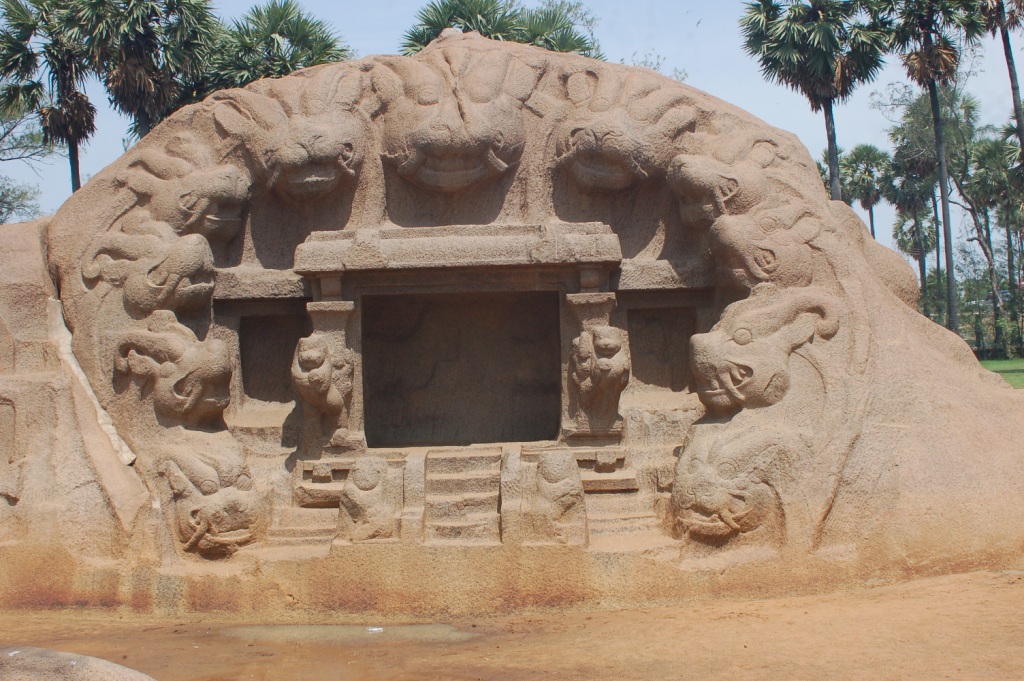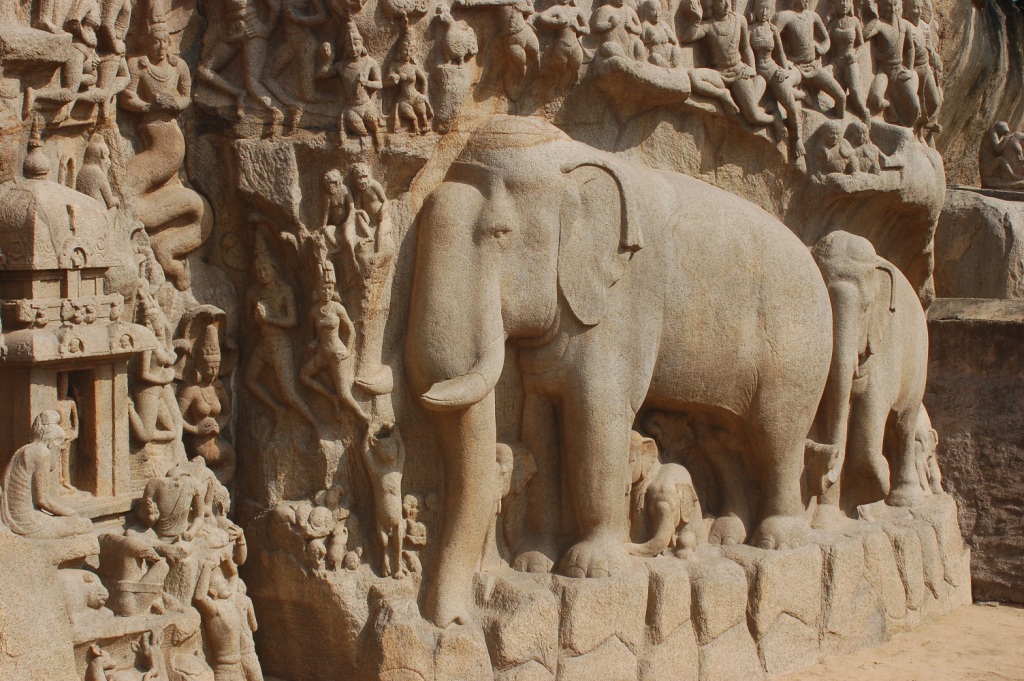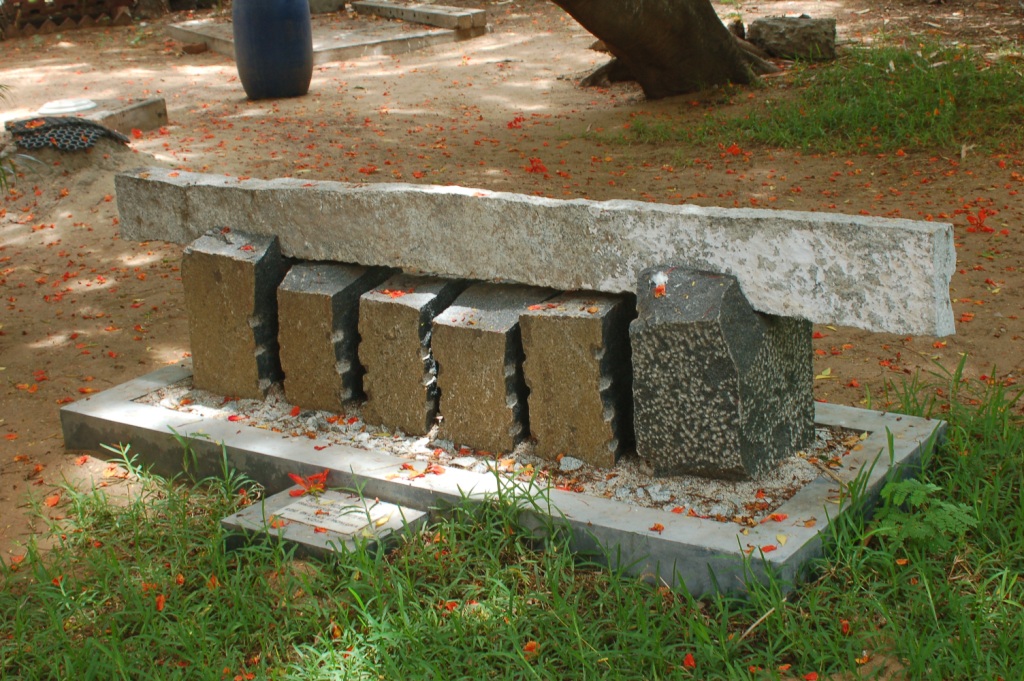IN PHOTOS: The Breathing Stones Of Mamallapuram
From the strategically placed Shivling to the legendary deities and folk tales, the stones of Mamallapuram have lives of their own. Know more about the mesmerizing stories behind this amazing World Heritage–listed and also learn about the new community of artists close by which is keeping the tradition alive!

From the strategically placed Shivling to the legendary deities and folk tales, the stones of Mamallapuram have lives of their own. Know more about the mesmerizing stories behind this amazing World Heritage–listed and also learn about the new community of artists close by which is keeping the tradition alive!
The stones that came to life at the hands of the Pallava sculptors here have been breathing for the last 1,500 years.
And the stones that have just been given life by their descendants will be breathing for the next 1,500. That’s the living tradition of an artistic land called Mamallapuram.

The whole village here is a World Heritage Site, with a small area of 8 sqkms and a miniscule population of less than 8,000. Around 200 of them carry forward the magical tradition of breathing life into stone.
And in many houses you will find three generations of sculptors chiseling under one roof; their chisels falling on granite rocks in an inherited symphony.
It was at the sanctum sanctorum of the Shore Temple that I had the darshan of the best guide I had ever met. His name was C. K. Prasad, and he looked the most unlikely candidate for the job. He was well-dressed to a fault, and had a quiet presence that only comes with intense introspection.

He was a retired civil engineer who lived in Chennai, and traveled 60 kms every day only because he was in love with Mamallapuram. He didn’t have a fixed rate for his service. He would be happy with anything that I gave him, he said, because he would have done it anyway for free! Later I was to realize that he was an encyclopaedia of Pallava art and history, and I really wondered if he wasn’t a descendant of a Mamalla king of yester-years.
The Shore Temple was excavated by the British from the golden sands of Mamallapuram in the 1900s, but it went under the sand again in the dreaded tsunami of 2004.
After the second excavation, 80 guardian Nandis have been lined up to form a protective ring around the sacred Shivling here. But will they be able to protect the God of Destruction from the next tsunami? I wonder.

A unique feature of this temple is that the shivling here is so strategically placed that it is bathed in a golden sunlight, both at sunrise and sunset. Situated bang in the middle of what was once a busy sea-port, it is considered to be the very first example of the finely evolved Dravidian style of architecture.
It is interesting to note that of all the temples in Mamallapuram, there’s only one that’s live: the Vishnu temple in the heart of the village. The others are all just architectural monuments: some rock-cut, some monolithic.
The most spectacular of the monolithic ones is Five Rathas. These are five temples in the shape of five chariots, each one carved in a different architectural style.

Though they are named after the Pandavas, the deities inside are Vishnu, Shiva, Durga, Indra and Surya.
Then I saw an amazing cave with two dramatically opposite scenes enacted on either side of the cave: on the left was the gruesome scene of Durga slaying Mahishasura, and on the right was the tranquil, cosmic sleep of Vishnu reclining on the serpent Shesh Nag. Behind this cave is the light house of the Pallavas which was lit by a fireplace and not a lamp.
To its right is the world’s largest bas-relief sculpture measuring all of 100 feet by 40 feet, where the main visual is Arjuna standing on one leg and doing penance in Kailas.

The natural fissure in this massive boulder has been incorporated into the sculpture itself. So in monsoon the gushing water that flows through the fissure looks like River Ganga descending from Kailas to the Earth.
To the north of this man-made marvel is a marvel of nature. A huge boulder with a height of 35 feet so precariously placed on a slope that it looks like it could be toppled by the gentle push of a little kid.
But village folklore has it that all the king’s horses and all the king’s men could not move it by an inch. For some strange reason, this humongous inedible rock is called Krishna’s Butter Ball.
All these wonders in stone are sprinkled in a radius of just 2 kms. The only one that’s away from here is a piece that should not be missed. It’s on the Mamallapuram-Chennai highway, some four kms away, and is called the Tiger’s Cave. This is an open-air theatre, and the stage is lodged right inside the mouth of a sculpted tiger! Next to the cave is a watch-tower in the shape of an obelisk, from where on a clear day you could spot the enemy in the sea.

The many structures that are left incomplete here show that Mahabalipuram was still work-in-progress even after two centuries of chiseling. And the work couldn’t be completed because the chisels of the Pallavas were silenced by those of the Cholas who captured their kingdom. But when the dust of the battle settled, a new style emerged that was a blend of the Pallava style and the Chola style. A style that carried on the tradition of breathing life into stone.
Legend has it that once a sthapathi or a master sculptor in Mamallapuram created an idol so full of life that when the chisel fell on the deity’s hand, the hand started bleeding!

Cholamandal Artists’ Village: At a sculpted stone’s throw
When the Pallavas were vanquished by the Cholas, the art too underwent a metamorphosis. The robust Pallava style was tempered by a more lyrical Chola style, the epitome of which is seen in the sculpture of the dancing Nataraja.
Inspired by this, K.C.S.Paniker, a pioneer in modern Indian art, established Cholamandal Artists’ Village between Mamallapuram and Chennai on the East Coast.
The idea was to have a community of artists living and working in the same place. Artists who wanted to break away from Western influences and search for a distinctly Indian idiom.

The result was a style that was an amalgamation of imagery from tantra, motifs from yantra, mathematical symbols, Indian mythology, and even Indian calligraphy. All of which was witnessed in the Madras Art Movement for the very first time in Indian paintings.
When I walked into this idyllic art world, I was greeted by an affable lady who took me around. First to K.C.S. Paniker Museum of the Madras Art Movement, and then to the two adjoining art galleries. But the open-air international sculpture park was a unique experience. The sculptures here took on a different meaning altogether as they sprouted from the landscape like living organisms.
As I drove back to Chennai, a thought crossed my mind. Whether it is the traditional sculptures that are influenced by the Pallavas or the contemporary sculptures that are inspired by the Cholas, every stone in Mamallapuram has a life of its own.

TYPE: ART & HERITAGE
BEST FROM: CHENNAI or MAMALLAPURAM
YOU NEED: 2 DAYS
When to go: Right through the year.
Where to stay: Call 044 25389857 or visit www.tamilnadutourism.org for bookings.
Like this story? Or have something to share? Write to us: [email protected], or connect with us on Facebook and Twitter (@thebetterindia).
If you found our stories insightful, informative, or even just enjoyable, we invite you to consider making a voluntary payment to support the work we do at The Better India. Your contribution helps us continue producing quality content that educates, inspires, and drives positive change.
Choose one of the payment options below for your contribution-
By paying for the stories you value, you directly contribute to sustaining our efforts focused on making a difference in the world. Together, let’s ensure that impactful stories continue to be told and shared, enriching lives and communities alike.
Thank you for your support. Here are some frequently asked questions you might find helpful to know why you are contributing?


This story made me
-
97
-
121
-
89
-
167













